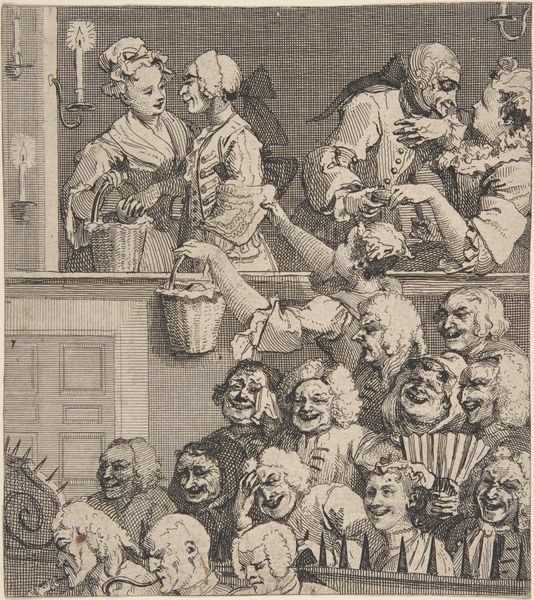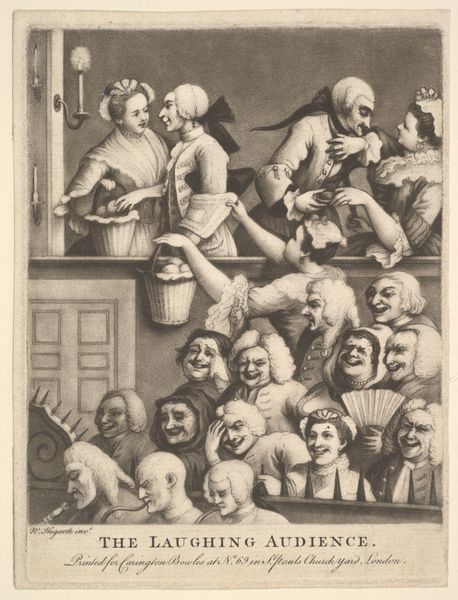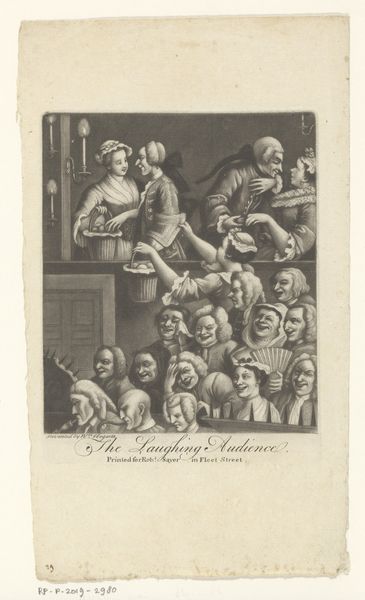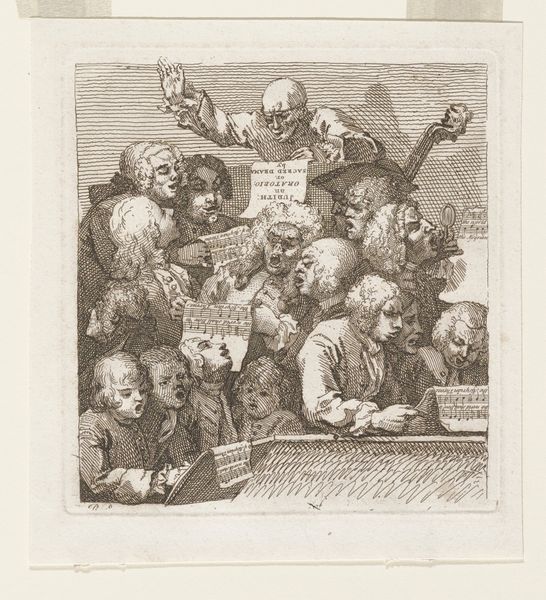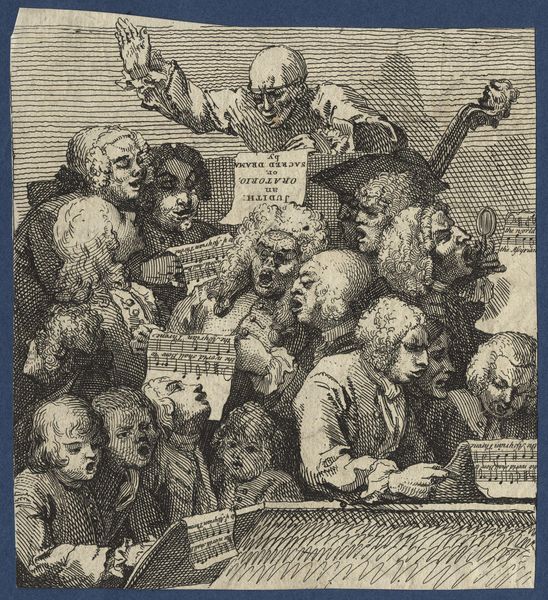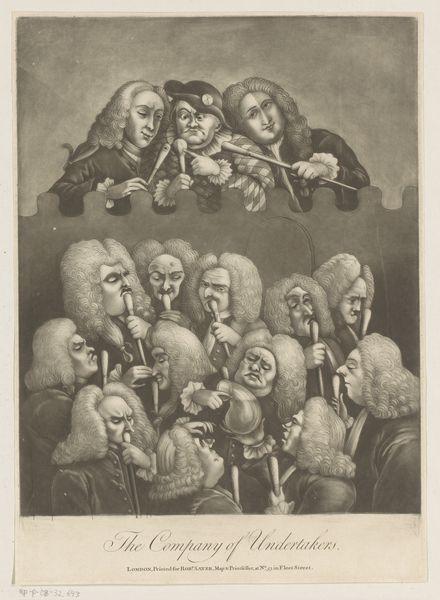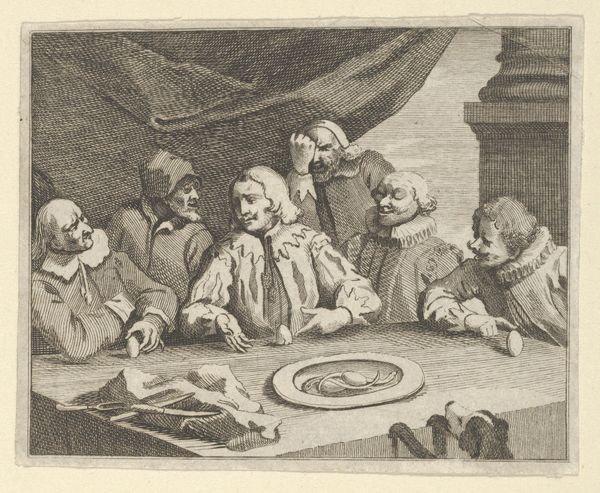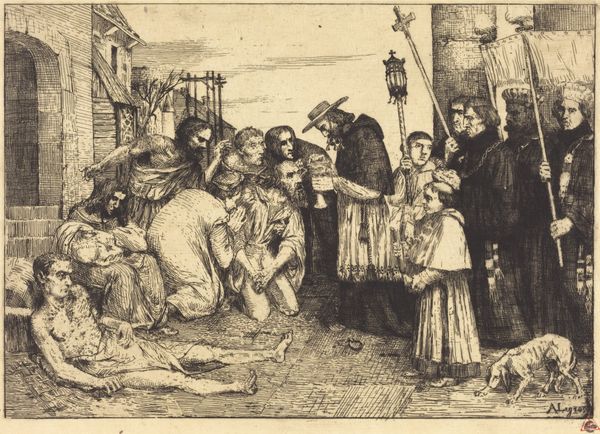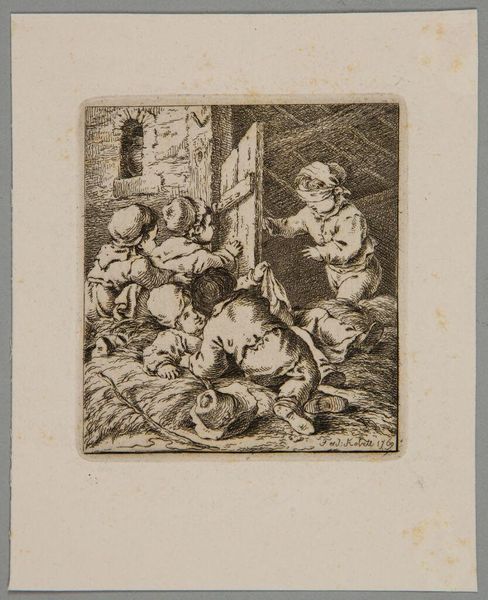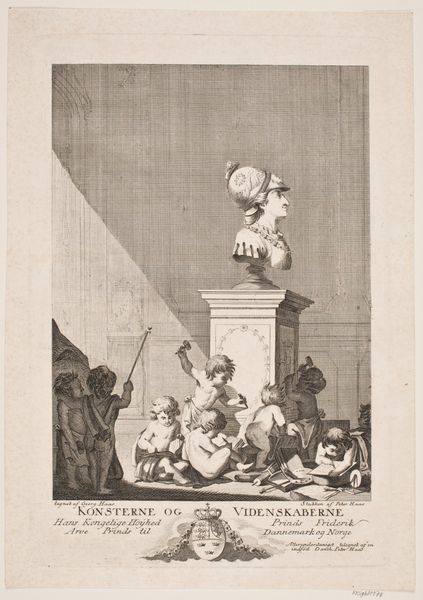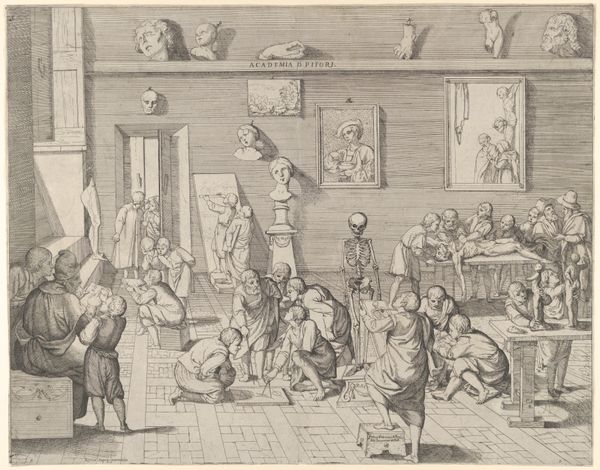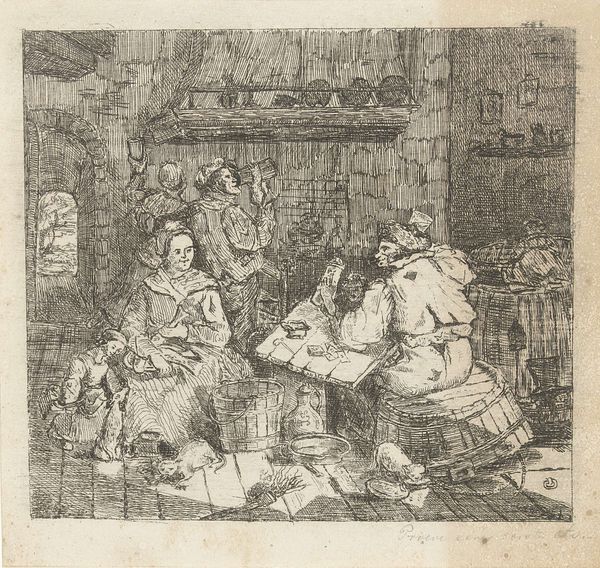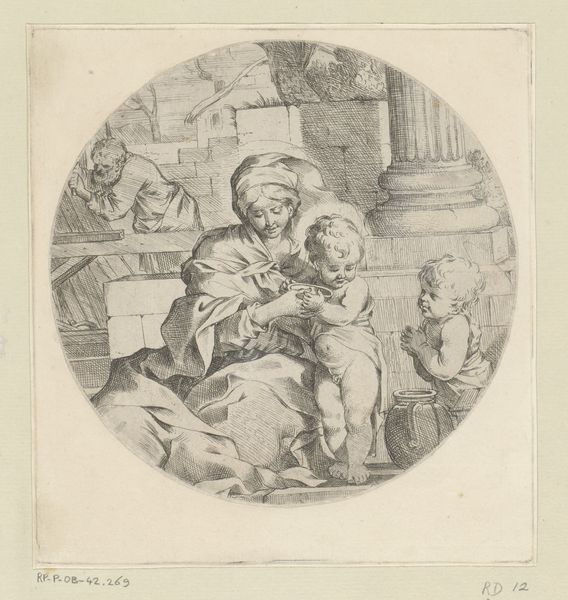
drawing, print, engraving
drawing
baroque
caricature
group-portraits
genre-painting
engraving
Dimensions: plate: 7 3/8 x 6 13/16 in. (18.8 x 17.3 cm) sheet: 8 3/4 x 7 3/8 in. (22.2 x 18.8 cm)
Copyright: Public Domain
Curator: Editor: This engraving, "The Laughing Audience" by William Hogarth, dated 1733, is full of striking caricatures! The exaggerated expressions are almost unsettling. I’m really curious, how do you read this piece, especially considering its context? Curator: Well, consider the medium itself: engraving, a printmaking technique. This allows for mass production and distribution. Hogarth used this to create images accessible to a broader public, thus participating in a larger culture of consumption. These weren't paintings for the elite; they were commodities circulating in society. How does understanding that shift your view? Editor: It makes me think about who he was targeting, and the social commentary he was making. Was he democratizing art by making prints, or exploiting popular taste? And what materials and labour were involved in the printing process? It must have required specialized skills to make these intricate lines... Curator: Exactly! The lines are incredibly sharp and detailed. Each character seems distinct, right? So think about the labor involved not just in the initial engraving but also in each individual print pulled. What does it mean that such a complex image can be endlessly replicated for purchase? It blurs the line between art and craft, doesn’t it? Editor: Yes, it definitely challenges that high art/low art divide. It sounds like the social context surrounding its production and dissemination is just as important as the image itself! Curator: Absolutely. The commodification of art changes the rules. Hogarth was not only creating images but also participating in, and commenting on, a changing social landscape driven by expanding markets. Editor: I’ll definitely be thinking more about the means of production, rather than just the image itself, next time I encounter an artwork!
Comments
No comments
Be the first to comment and join the conversation on the ultimate creative platform.
